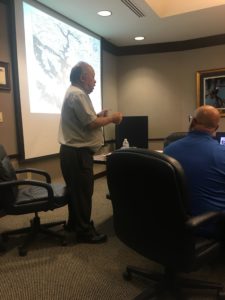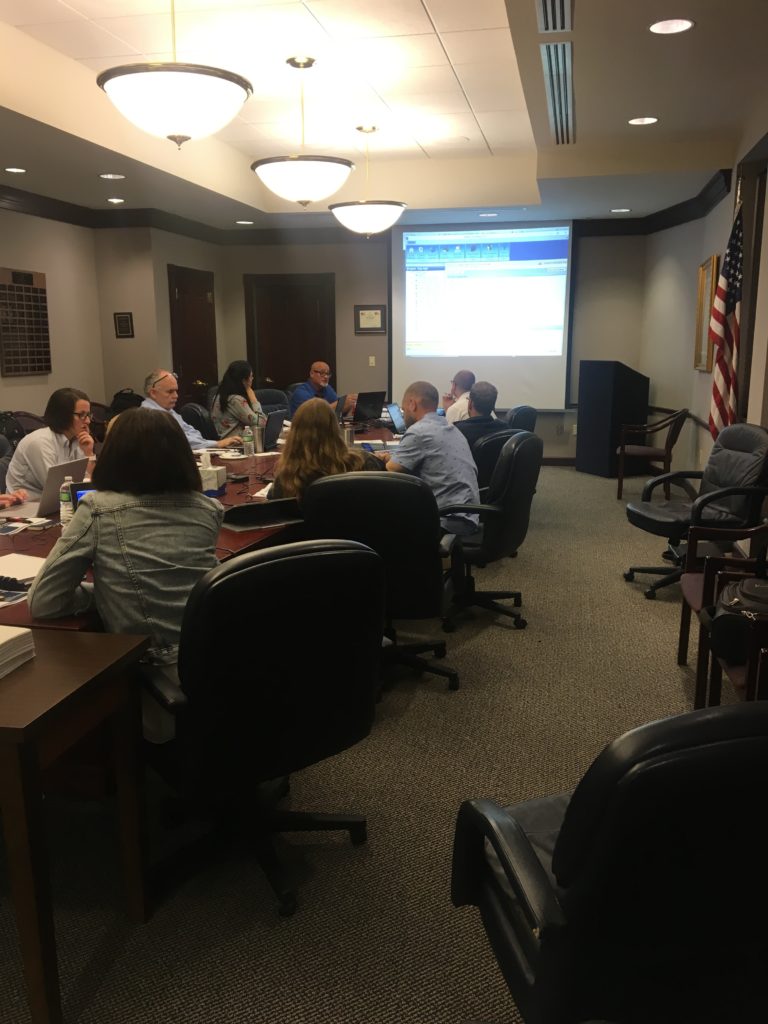NEPTA NEWS
A Top Louisiana Engineering Firm receives BCA Training by NEPTA
NEPTA PROVIDES PROFESSIONAL FEMA BENEFIT-COST ANALYSIS TRAINING.
Program Director Comments: “Thank you! The training was a success from our perspective as well…I appreciate the opportunity to provide BCA training to our staff. It will be extremely beneficial in many of our current pursuits. We will certainly reach out to….. as needed, no doubt they are great resources.”
The National Emergency Planning and Training Association recently provided Benefit-Cost Analysis Training to a group of engineers in Louisiana. After the training, each participant received a professional certificate of completion.
WHAT IS A BENEFIT COST ANALYSIS: A Benefit-Cost Analysis (BCA) is the method by which the future benefits of a hazard mitigation project are determined and compared to its costs. The end result is a Benefit-Cost Ratio (BCR), which is calculated by a project’s total benefits divided by its total costs. The BCR is a numerical expression of the “cost-effectiveness” of a project. A project is considered to be cost-effective when the BCR is 1.0 or greater, indicating the benefits of a prospective hazard mitigation project are sufficient to justify the costs.
FEMA requires a BCA to validate cost-effectiveness of proposed hazard mitigation projects prior to funding. There are two drivers behind this requirement: (1) the Office of Management and Budget’s (OMB) Circular A-94 Revised, “Guidelines and Discount Rates for Benefit-Cost Analysis of Federal Programs” and (2) the Stafford Act.
The goal of Circular A-94 is to promote efficient resource allocation through well-informed decision-making by the Federal Government. FEMA’s BCA Toolkit has been developed to meet the guidelines published in Circular A-94.
The Stafford Act authorizes the President to establish a program to provide technical and financial assistance to state and local governments to assist in the implementation of hazard mitigation measures that are cost effective and designed to substantially reduce injuries, loss of life, hardship, or the risk of future damage and destruction of property.
 NEPTA’s BCA Expert provides training on Hydrologic and Hydraulic Analysis.
NEPTA’s BCA Expert provides training on Hydrologic and Hydraulic Analysis.
Applicants and subapplicants must use FEMA-approved methodologies and tools to demonstrate the cost-effectiveness of their projects. FEMA has developed the BCA Toolkit to facilitate the process of preparing a BCA. Using the BCA Toolkit will ensure that the calculations are prepared in accordance with OMB Circular A-94 and FEMA’s standardized methodologies. It is imperative to conduct a BCA early in the project development process to ensure the likelihood of meeting the cost-effectiveness eligibility requirement.
The BCA Toolkit consists of modules for a range of major natural hazards and project types including:
- Flood
- Tornado Safe Room
- Hurricane Wind
- Hurricane Safe Room
- Earthquake
- Wildfire
- Drought
- Damage-Frequency Assessment (Multi-Hazard)
A non-FEMA BCA methodology may only be used when it addresses a non-correctable flaw in the FEMA-approved BCA methodology or it proposes a new approach that is unavailable using the FEMA BCA Toolkit. The non-FEMA methodology must be approved by FEMA in writing prior to submission of the project application to FEMA.
In June 2009, the Greatest Savings to The Fund (GSTF) approach was released for use in demonstrating the cost-effectiveness of mitigation projects. Currently, FEMA allows the use of the GSTF methodology for any HMA program for Severe Repetitive Loss (SRL) properties. Applicants are required to use the current GSTF value at the time of application submission.

ONE-ON-ONE Training ensures that each participant has a deep understanding of the material.


